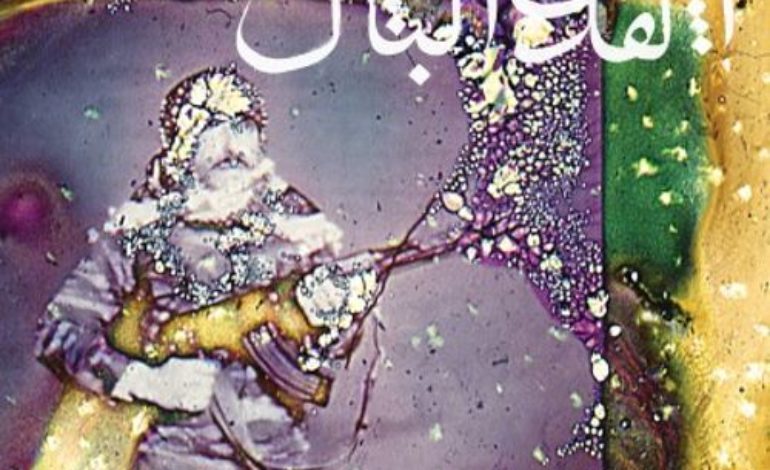

Genre fusion at its strangest and finest
Jerusalem in My Heart, an audio-visual duo comprised of producer-musician Radwan Ghazi Moumneh and experimental filmmaker Charles-André Coderre, has released their third full-length album Daqa’iq Tudaiq. Meaning “minutes that bother/oppress/harass,” Daqa’iq Tudaiq sends listeners down a wormhole of experimental textures and Arabic folk instrumentals that only Moumneh could combine into a project that is equally intriguing as it is eerie. This isn’t the first time that Jerusalem in My Heart has modernized Arabic folk music. On their debut album Mo7it Al-Mo7it, they married Arabic singing with electronic instrumentals and experimentation, creating intimate music at the frontier of genre fusion. On their second full-length studio album, Moumneh’s one-of-a-kind vocal delivery stands out, especially on tracks like “Lau Ridyou Bil Hijaz?” where they are paired with rattling, lo-fi electronica. When paired with Coderre’s surreal analog film, transformed by acid, grain and splicing, Jerusalem in My Heart bridges the disconnect between auditory and visual art in mesmerizing performances across the globe.
Daqa’iq Tudaiq is divided into two sides: Side One is a four-part journey packed to the brim with unique Arabic instrumentation and textures from a 15-member orchestra in Beirut, while Side Two is alike to the solo material that Moumneh released in the past. Moumneh first pays homage to “Ya Garat Al Wadi” an Egyptian classic, by transforming it into modern contexts and changing the title to “Wa Ta’atalat Loughat Al Kalam,” which translates into “The Language of Speech has Broken Down.” These words could be interpreted as dismal, or they could be interpreted as romantic, suggestive of the wordless connections that emerge with love. After moving through the four-part epic of a song, it is clear that Moumneh wanted both interpretations.
On “Wa Ta’atalat Loughat Al Kalam, Pt. I,” Moumneh’s voice comes off seductive and slow amongst festive strings and a wooden gallop of a beat. The instrumental follows a period of silence, static buzzing and feedback, making the shift from the sparse beginnings to the colorful Arabic instrumentals that much more intense. The melody shifts into an oriental scale by the end of the song, smoothly transitioning into “Wa Ta’atalat Loughat Al Kalam, Pt. 2,” where Moumneh slowly integrates more elements of modern music and experimentation. His voice echoes and lags, the strings overlap each other with dissonant melodies, before joining together to create a singular melody instead. Moumneh’s vocoded vocal melodies slither in the background behind the strings. These strings play so intensely and intricately that it is dubious whether they are glitched or are just played that quickly. In moments like these, Moumneh blurs the line between experimental modern music and complex folk music with ease and grace.
Though all four parts of Side One deserve praise, Side Two also has its standouts. “Bein Ithnein” has an intensely steady marching drum beat, eventually joined by monotonous, mid-toned beeps flowing in a uniform stream. Interesting electric synth tones combine with quick strums of Arabic style guitar, creating a playful dynamic of cheerful rhythm. Most notes, no matter what instrument they come from, are staccato, bouncing off all of the other tones and textures that Moumneh has created. Abrasive synth screeches alternate between the right and left sides, allowing the strings to take a backseat to all of the pulsing electronica of the song. Another highlight is “Thahab, Mish Roujou’, Thahab”–an Arabic chant vocoded to the extreme, croaking and glitching. Like a futuristic interpretation of a ghost song, the haunting melody rumbles ominously, taking long pauses that only intensify its schizophrenic nature. With no acoustic instruments, “Thahab, Mish Roujou’, Thahab” pushes Arabic folk music far away from its roots into unchartered territory, resulting in something so sinister it’s impossible to turn away from.
Daqa’iq Tudaiq, the latest installment of Jerusalem in My Heart’s work, pushes the boundaries of musical fusion further than they have ever done before. This is no ordinary feat, as Jerusalem in My Heart has already contributed milestones in innovating Arabic music into something more modern and experimental in the past decade. Coderre’s experimental film, which oozes, boils and chemically burns splashes of vibrant color over compelling documentations of faces young and old, pairs perfectly with the music. They symbiotically build upon one another, elevating the cultural pride that is so evident from Moumneh’s work with the artistic experimentation both he and Coderre have been doing for years. The pair show off the artistic chemistry it takes to pull off a project like Daqa’iq Tudaiq so effortlessly, giving fans another treat that continues to push the boundaries of genre and culture.
